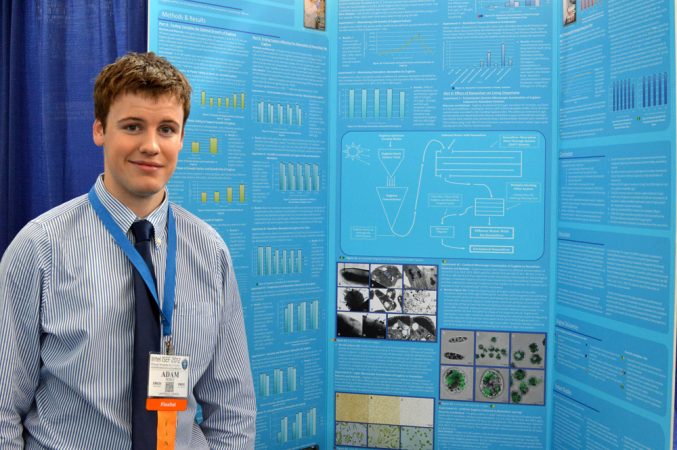Nanosilver, away!
Technique uses microorganisms to scour tiny pollutants from waste water
By Sid Perkins

A new way to treat municipal wastewater uses microorganisms to remove tiny particles of silver, often called nanosilver. In recent years, many studies have been pointing to the potential for these metal particles to cause harm.
Research has shown that nanosilver has a disinfecting effect, either killing or stifling the growth of bacteria and fungi. That’s why, increasingly, many manufacturers have been adding substantial amounts of nanosilver to a variety of consumer products, everything from toothpastes and pet shampoo to cosmetics and socks.
Researchers are worried, however, that clouds of nanosilver may have a dark lining. Lab tests have shown that high concentrations of the tiny particles can cause damage to DNA in certain types of cells. Some tests suggest that nanosilver might also have harmful effects on human immunity, suppressing a cell’s ability to defend itself in certain ways.
Now, Adam Noble, an 18-year-old 12th-grader at Lakefield District Secondary School in Lakefield, Canada, has developed a technique that removes nanosilver from waste water. Noble harnessed the scour power of a single-celled microorganism called Euglena. He mixed nanosilver-tainted water with a solution filled with lab-grown Euglena. Each liter of the final blend contained about 50,000 of the microorganisms. And those microbes absorbed 99.99 percent of the water’s nanosilver particles within one hour.
Traces of the silver particles can end up in water after being dissolved out of, washed from or rubbed off of consumer products. The young scientist collected his water samples from a local wastewater treatment plant, a facility that cleans up polluted water before releasing it again into streams or other natural water systems.
The Euglena probably didn’t intend to eat the nanosilver, Noble says. Instead, it seems that the tiny particles are attracted to — and then stick to — the outer surface of the microorganisms. Once that contact is made, the microbes slurp up the nanosilver. The particles are stored in tiny structures within the microbes’ bodies. Whatever the reason for the cells’ accumulation of the silver, the fact that they do it so efficiently means that they can be harnessed for cleaning up water. Afterwards, water cleanup engineers can filter out the Euglena and then process them to recover the nanosilver. Noble’s tests show that the nanosilver recovered from wastewater has the same disinfecting effect that freshly manufactured nanosilver does.
Noble’s tabletop prototype can process just a couple of liters of water at a time, but he estimates that his system could be enlarged enough to process more than 6,500 liters of water each hour. The high-school inventor described his technique May 15 at the Intel International Science and Engineering Fair in Pittsburgh, Pa. This event is sponsored by Intel Foundation and run by the Society for Science & the Public (which publishes Science News for Kids).
Noble’s full-scale system, if it works as well as his prototype does, would easily pay for itself, he suggests. His local wastewater treatment plant releases an estimated 3.2 kilograms of nanosilver, which is worth about $4.2 million, into the Otonabee River each year. His Euglena-powered biofilter, in contrast, would likely cost only $700,000 each year to operate.
Noble has applied for Canadian and international patents for his nanosilver-filtering process. At a meeting of water-treatment officials in Canada last week, a representative of a company that manufactures water cleansing equipment offered to help Noble find the funding to build a large version of his biofiltering system and to install it at a treatment plant to see how well the technique works at a large scale.
This is one in a series of articles covering the Intel ISEF 2012 competition. Check back soon for more stories.